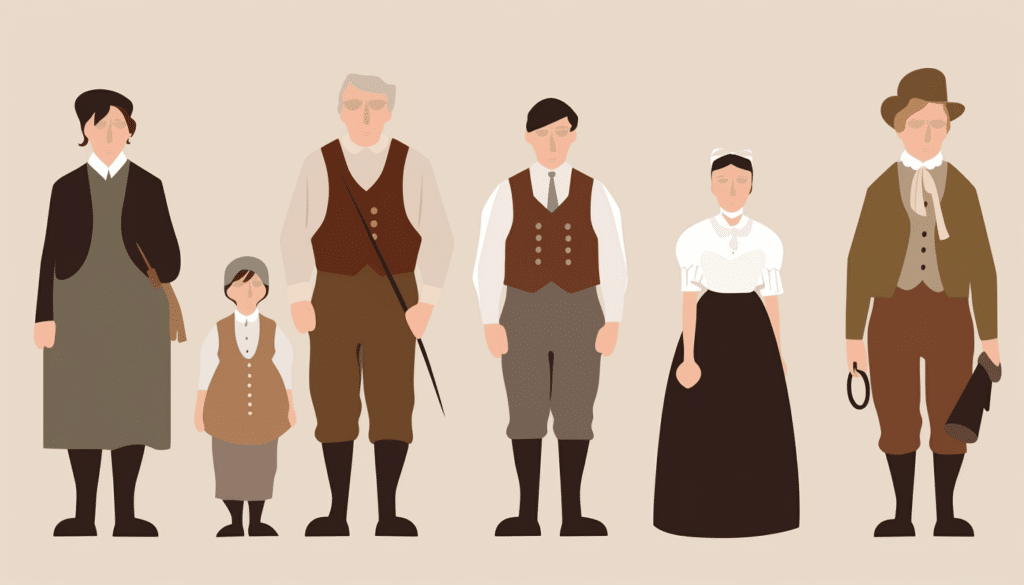Americans of German descent now residing in the homeland of their ancestors have an unparalleled opportunity to trace their roots to a certain town and perhaps meet with some distant relatives of the same name.
Research into your German ancestors will have to start in the States. The important link is the ancestor who emigrated. You must, as a starter, have this person’s name. If you don’t know it, start by using the resources within your own family. Contact relatives, even distant ones, starting with the oldest.
It’s sometimes surprising what can be discovered if you do a little digging. Perhaps a great aunt can fish an old family Bible out of an attic trunk. These were often used in the 19th century to record births, deaths and marriages Or perhaps she will have a yellowing certificate of a birth, christening, marriage or death, or maybe a school, medical or military record. Hopefully, this will provide at least the name of the ancestor and where he or she lived in the States.
Other useful information includes where and when the ancestor was born in Germany, when he or she emigrated and on what ship. But if the great aunt doesn’t have this information, there are many other places to look.
Courthouse records of the community where the ancestor lived can be useful. These include records of court proceedings, deeds, wills, probates, birth records and death records. Church records in the community, primarily of baptisms and marriages, also can be helpful. Gravestones, too, can contain a few useful facts, and newspapers are often good sources of marriage notices, obituaries and birth announcements. To use them, though, you need to have a pretty good idea of when the event occurred.
Present day genealogists have a valuable tool that would have been the envy of earlier generations: the Internet. Genealogy ranks right up there with sports and finances (and sex!) in the vast number of websites given over to it.
The two websites generally considered to be the most complete are RootsWeb www.rootsweb.com and the Mormon Church’s Family Search www.familysearch.org. Both are set up for searches. You can enter the known facts about your ancestor and, with luck, come up with additional details. They even factor in the possibility of spelling variations. Genealogical websites also have chat rooms, in which family history buffs exchange experiences.
The National Archives and its 13 regional branches are treasure troves for the genealogist. It is becoming increasingly possible to go to one of the centers and access a file electronically even if it is located elsewhere. The archive also will supply a copy of a document by mail, for a fee. For a full report on its services, check its website at www.nara.gov.
Probably the richest sources maintained by the National Archives are the records of the censuses, which the United States has conducted every ten years, without missing a single one, since 1790. The early ones were sketchy, but since about 1850 they have been rich in such details as your ancestor’s date and place of birth, occupation, address and names and ages of spouse and children.
And you are permitted to access this information about your ancestors, as long as they lived long ago. Census records are confidential for 72 years, but after that anyone with an interest can look at them. That means that the censuses of 1790 to 1930 are now available, with the 1940 one to be released in 2012. An exception is the census of 1890, which was largely destroyed in a fire.
The National Archives also has a wealth of other useful documents, including naturalization records, ships’ passenger lists and military records. States and cities also maintain archives and these, like the National Archives, usually allow visitors to look at their documents. They may also provide copies by mail, for a fee, to anyone who can be specific about the information sought.
Let us say you now have the vital data on your ancestor. It’s time to seek out your German roots and meet with your distant relatives. Your first problem may be to locate the town in modern Germany. If the person emigrated before unification in 1871, as most of them did, the location of the town probably won’t be given as “Germany,” but as the state or principality that was later made part of Germany.
There were many of these between the final demise of the Holy Roman Empire in 1806 and the establishment of the German Reich by Bismarck in 1871. This crazy quilt of squabbling petty states, indeed, was largely responsible for emigration during that period as economic opportunities were few.
Prussia (Preussen) and Saxony (Sachsen) present special problems. The name of Prussia has disappeared from the map. The conquering allies after World War II didn’t like the images it conjured up of blood, iron and militarism. There is a state named Saxony, but the name Sachsen appears in two other states, Niedersachsen and Sachsen-Anhalt. (See the box for some help in locating these provinces.)
There are many possible sources of information within Germany. Census were conducted the areas that became Germany, but the records still are not neatly located in one institution. Present German law does not permit the release of census information on a person until 30 years after his or her death or, if the date of death is not known, until110 years after birth.
Other sources include church registers (primarily for births, baptisms, marriages and deaths), civil registers (dates and places of birth, marriage, death, relationships and occupations), school records, military records, emigration records, ship passenger lists and city directories.
Some German civil records date back to Napoleonic times, but others only go back to around the 1870s, which might be too late for many people. Church records, however, go back as far as the 15th century.
Cemeteries in Germany aren’t as useful as they are in the states. Burial lots here are leased for a specific number of years and if the lease isn’t renewed, someone else can be, and usually is, buried there.
Checking records for the current spelling of the family name will often present problems. Names were not spelled so consistently by Germans in the old days. There were dialects and the literacy level was not as high. Even today, you’ll find people named Muller, Mueller, Möller and Moeller in addition to Müller. And then, after arrival in America, the name was often changed again, perhaps to Miller, to accommodate English speakers. So remember to check for variant spellings.
The Deutsche Arbeitsgemeinschaft Genealogischer Verbände e.V. (DAGV) (Anfragenverteilstelle, Postfach 50 04 08, D-45056 Essen) is an umbrella organization for most of the German genealogical agencies. The website (in German) is www.dagv.org; email to [email protected]. It does no research on its own, but can steer you to the regional association of interest to you. The regional associations in turn can probably tell you where the records from your ancestor’s home community are kept. Sometimes they are still in the community, but they often will have been moved to a central archive, perhaps operated by the state.
You’ll find an extensive list of genealogical organizations on the DAGV’s website: www.genealogienetz.de/index_en.html. Many of the listings are simply links to the regional organizations. This website also has a wealth of other information, in English, including tips on reading the baffling German handwriting used in earlier times. You can also download an English language information page (an interactive pdf file) at: http://www.dagv.org/pdf/DAGV-Merkblatt_en.pdf.
Where Are They Now?
| Baden- Württemberg | Grand Duchy of Baden, Principality of Hohenzollern, Kingdom of Württemberg. |
| Bavaria | Kingdom of Bavaria (excluding Rheinpfalz), Duchy of Sachsen-Coburg. |
| Brandenburg | Western portion of the Prussian Province of Brandenburg. |
| Hesse | Free City of Frankfurt am Main, Grand Duchy of Hessen-Darmstadt (less the province of Rheinhessen), part of Landgraviate Hessen-Homburg, Electorate of Hessen-Kassel, Duchy of Nassau, District of Wetzlar (part of the former Prussian Rheinprovinz), Principality of Waldeck. |
| Lower Saxony | Duchy of Braunschweig, Kingdom/Prussian, Province of Hannover, Grand Duchy of Oldenburg, Principality of Schaumburg-Lippe. |
| Mecklenburg- Vorpommern | Grand Duchy of Mecklenburg-Schwerin, Grand Duchy of Mecklenburg-Strelitz (less the principality of Ratzeburg), western portion of the Prussian province of Pomerania. |
| North Rhine- Westphalia | Prussian province of Westfalen, northern portion of Prussian Rheinprovinz, Principality of Lippe-Detmold. |
| Rheinland-Pfalz | Part of the Principality of Birkenfeld, Province of Rheinhessen, part of the Landgraviate of Hessen- Homburg, most of the Bavarian Rheinpfalz, part of the Prussian Rheinprovinz. |
| Saarland | Part of the Bavarian Rheinpfalz, part of the Prussian Rheinprovinz, part of the principality of Birkenfeld. |
| Sachsen- Anhalt | Former Duchy of Anhalt, Prussian province of Sachsen. |
| Saxony | Kingdom of Sachsen, part of the Prussian province of Silesia. |
| Schleswig- Holstein | Former Prussian province of Schleswig-Holstein, Free City of Lübeck, Principality of Ratzeburg. |
| Thuringia | Duchies and Principalities of Thüringen, part of Prussian province of Sachsen. |


























